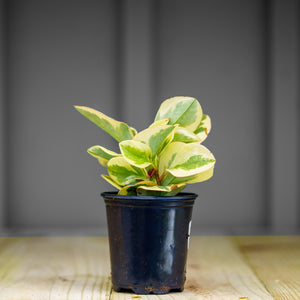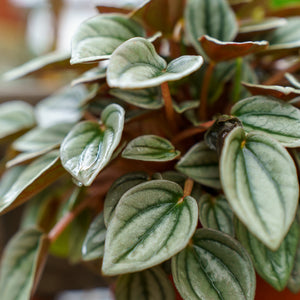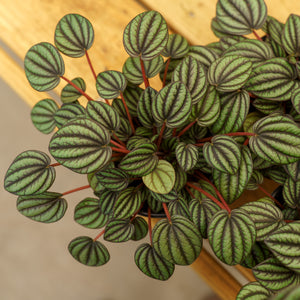The Peperomia Guide
Peperomia is a diverse and charming genus of compact houseplants prized for their ornamental foliage, ease of care, and tolerance for indoor conditions. With more than 1,000 species ranging in leaf color, texture, and form, peperomias are ideal for beginners and collectors alike. Their small size and decorative appeal make them popular choices for desktops, windowsills, and terrariums.
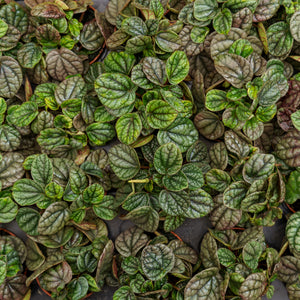
About
Native to tropical and subtropical regions of Central and South America, peperomias are members of the Piperaceae family. They are typically small-statured plants that grow in leaf litter or as epiphytes on trees, meaning they are adapted to lower light and minimal root competition. Peperomia foliage comes in many forms—rippling, trailing, round, striped, or heart-shaped—with species and cultivars suited to nearly any interior aesthetic.
- Peperomia obtusifolia is a classic, upright species with thick, succulent-like leaves.
- Peperomia caperata cultivars like 'Quito', 'Grey Luna', and 'Rosso' feature deeply corrugated foliage in shades of silver, burgundy, or green.
- Peperomia prostrata and 'Pepperspot' are trailing species perfect for hanging baskets or shelf edges.
- Peperomia argyreia (Watermelon Peperomia) is named for its silver-striped foliage resembling watermelon rind.
- Peperomia polybotrya and Peperomia albovittata 'Piccolo Banda' offer bold shapes and contrasting leaf patterns for high-impact arrangements.
Because of their varied looks and easy-going nature, peperomias are often collected in groups or rotated seasonally around the home.
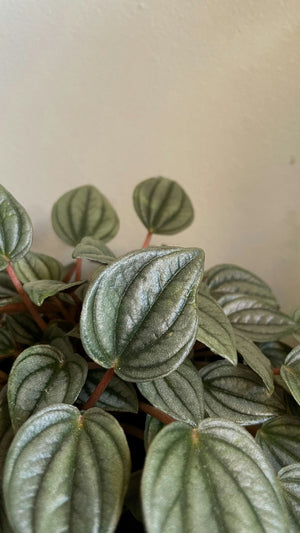
PLANTING
Peperomia thrives indoors in containers with excellent drainage and moderate light:
- USDA Hardiness Zones: Grown as houseplants in all zones; suitable for outdoor planting in Zones 10–12 only.
- Soil: Use a well-draining potting mix with added perlite or orchid bark. A mix designed for succulents or epiphytes is ideal.
- Sunlight: Bright, indirect light is best. Avoid direct afternoon sun, which can scorch leaves. Variegated types like 'Ruby Cascade' may need more light to maintain coloration.
- Containers: Choose pots with drainage holes to prevent root rot. Terracotta or breathable materials help regulate moisture.
- Repotting: Peperomias prefer to be slightly root-bound and need repotting only every 2–3 years.
Avoid placing plants in low light or overwatering, as these are the most common causes of stress and decline.
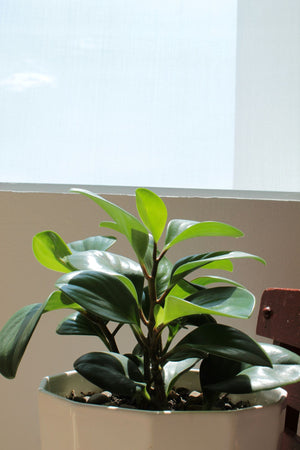
CARE
Peperomias are low maintenance but benefit from consistent conditions and gentle care:
- Watering: Allow the top 1–2 inches of soil to dry between waterings. Water less frequently in winter. Avoid soggy soil.
- Humidity: Moderate to high humidity is preferred. Most species tolerate average household levels, but a pebble tray or humidifier can help during dry seasons.
- Fertilizing: Feed monthly during spring and summer with a balanced liquid houseplant fertilizer at half strength.
- Pruning: Pinch back stems to maintain compact shape and encourage bushier growth. Remove any yellow or damaged leaves.
- Pests: Watch for mealybugs and fungus gnats. Maintain clean foliage and good airflow to prevent infestations.
Trailing varieties like Peperomia 'Ruby Cascade' and Peperomia prostrata benefit from regular trimming to keep them tidy and full.
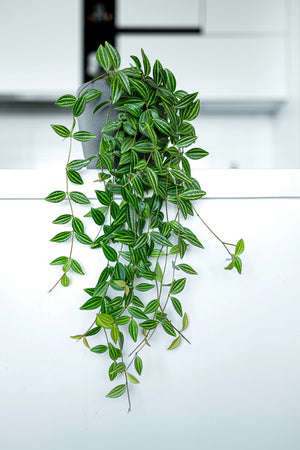
HOW TO USE
Peperomia’s compact size and textural diversity make it a versatile addition to any indoor space:
- Terrariums & Dish Gardens: Use mini varieties like 'Little Toscani' or 'Schumi Red' in enclosed glass environments with other humidity-loving plants.
- Desktops & Offices: Tidy, slow-growing types like 'Napoli Nights' or Peperomia polybotrya brighten workspaces without taking up much room.
- Hanging Baskets: Cascading forms like 'Red Log' or 'Ruby Cascade' drape gracefully from macramé hangers or wall shelves.
- Group Displays: Mix several cultivars for a striking foliage collection with contrasting shapes and colors.
- Bathroom Plants: Their tolerance for humidity makes peperomia a great option for bathrooms with bright filtered light.
They pair well with pilea, calathea, hoya, or sansevieria for dynamic and modern indoor displays.
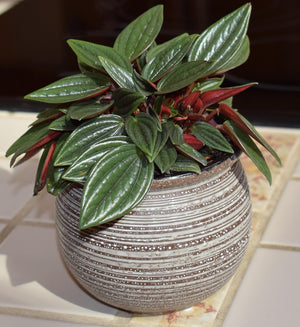
COMMON QUESTIONS
- Is peperomia toxic to cats? No, peperomia is considered non-toxic to cats.
- Is peperomia toxic to dogs? No, peperomia is also non-toxic to dogs.
- How to propagate peperomia? Most types root easily from stem or leaf cuttings. Use moist potting mix or water propagation and provide bright light.
- Is peperomia a succulent? Peperomia is semi-succulent. It stores water in its leaves but differs from true succulents in its growing habits and light requirements.
- Do watermelon peperomia grow fast? They grow slowly to moderately. With ideal care, Peperomia argyreia will gradually fill out over time.
- How to care for peperomia? Provide bright indirect light, allow soil to dry slightly between waterings, and fertilize monthly during the growing season.
- How often to water peperomia? Water every 7–10 days, depending on light and humidity. Always let soil dry slightly between waterings.
Conclusion
Peperomia plants are prized for their compact form, bold foliage, and forgiving care needs. Whether grown in hanging baskets, grouped on a shelf, or tucked into terrariums, these adaptable houseplants offer color and character without demanding constant attention. With so many species and cultivars available—from rippled 'Quito' to trailing 'Pepperspot'—there’s a peperomia for every corner of your home.
The Peperomia Collection
Sold Out
Sold Out
Sold Out
Sold Out
Sold Out

